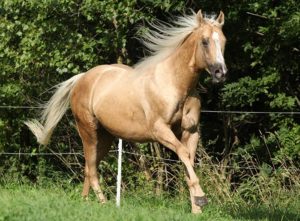
Equine Wound Care Done Right
Get tips on how to manage equine leg lacerations that require bandaging.


Get tips on how to manage equine leg lacerations that require bandaging.

Learn how to store hay and grain properly—keeping nutrients in and mold, rodents, and spoilage out.

Assessing a horse’s limbs, feet, and body can help you and your veterinarian identify anatomical traits that could end up being performance-affecting liabilities.

Find out what commonly applied practices horse owners and caretakers tend to overdo.

Take a few simple precautions and management approaches to help your horse weather winter safely.

Find out what causes watery feces in horses and whether you should be concerned.

The steps you take to care for your horse both immediately after a competition and once you’re back home are important to his athletic longevity.

Varying the surfaces on which you exercise your horse can help produce a strong, well-rounded equine athlete.

Learning to read a horse’s facial expressions and postures at rest and under saddle can help you become more sensitive to detecting pain in horses.

Resolving horse hoof wounds requires working closely with your veterinarian to manage lesions until they heal. Learn about 4 common hoof wounds and how vets treat them.

Many situations horses face lead to chronic stress, which can result in changes in health and behavior.

Veterinarians and farriers can work together to help club-footed horses lead productive lives.

Horse show environments can put sport horses at risk for developing skin problems. Learn what causes common skin issues and how to return horses to top form.

Learn how to detect and manage this insidious hoof infection.

How to help performance horses of all types reach peak fitness.

Newly identified liver viruses in horses might be more common than we realize.
Stay on top of the most recent Horse Health news with